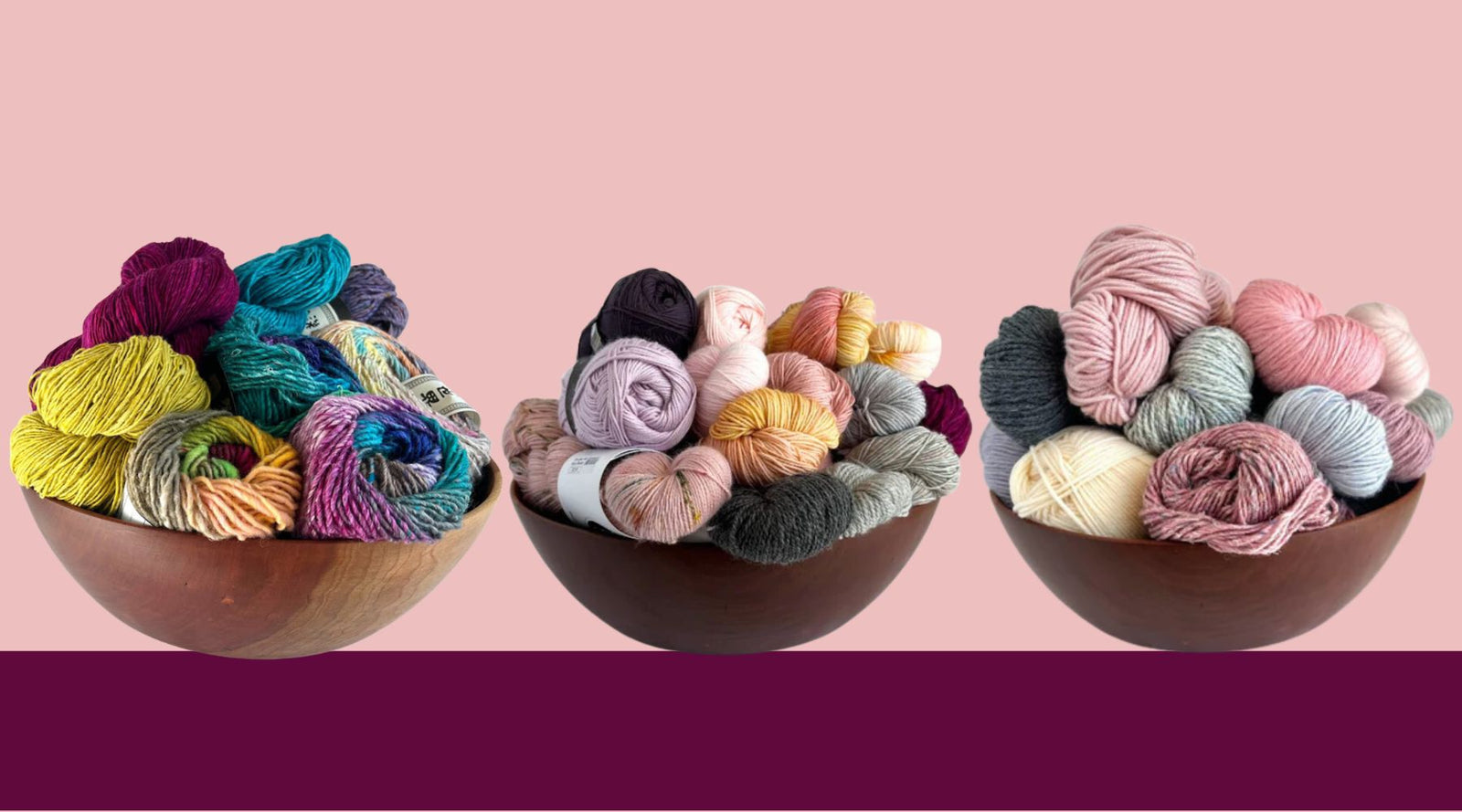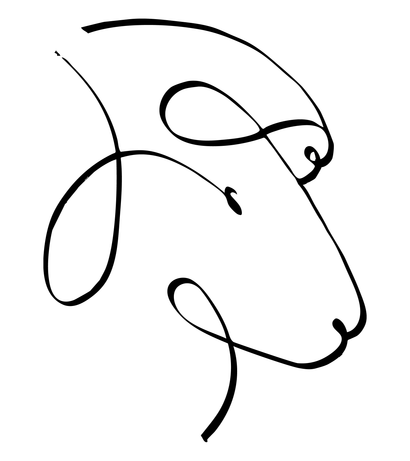Free shipping on all domestic orders over $150
Free shipping on all domestic orders over $150
Shop
Add description, images, menus and links to your mega menu
A column with no settings can be used as a spacer
Link to your collections, sales and even external links
Add up to five columns
Add description, images, menus and links to your mega menu
A column with no settings can be used as a spacer
Link to your collections, sales and even external links
Add up to five columns

All the different ways to make yarn colorful--and why Noro works
June 02, 2025 5 min read
It's always about the color. Whether it's my favorite powder soft pinks, bold brights, or elegant neutrals, color is what draws us to a skein or a project in the first place. But using colorful yarn in projects can be an iffy proposition. If you've ever gazed a a gorgeous skein and wondered will you be able to see my cables with this yarn? or how will this yarn look in lace? you’re not alone.
Here's the problem: people tend to divide yarn into two categories --solid or variegated--and there's a myth that in order to showcase stitch work, you have to choose a solid, neutral yarn. While it’s true that high-contrast variegated yarns can obscure complex stitch patterns, not all colorful yarns behave the same way. In fact, some colorful yarns can beautifully enhance your stitch work—not hide it.
Let’s look at the different ways yarns can be colored, how they interact with texture, and which type you might want to use for which projects. . I want to then look at Noro, in particular, which can be a superstar is both color and stitch work.
What are the different ways yarns can be colorful?
What is a solid yarn?
Solid yarns are dyed a single, uniform color throughout the skein. They’re ideal for showing off stitch work because the color stays consistent and doesn’t compete with texture. Great for cables, lace, and intricate motifs. If you're concerned about showcasing your stitches, be sure to choose a yarn that is not too dark. Very hard to see stitch work on black yarn!

Juniper Moon Cumulus is a solid colored yarn
What is a semi-solid yarn?
Semi-solids feature subtle tonal variations of a single color. These shifts—usually created through kettle dyeing—add depth without distraction, making them a beautiful choice for textured patterns and garments that need a little movement. They can also be created when the yarn contains different fibers, each of which takes the dye differently, creating subtle lights and darks. Noro Sonata and many Tea Time Early Grey yarns are semi solids

Noro Sonata is a semi-solid colored yarn
What is a heathered yarn?
Heathered yarns are made by blending fibers dyed in different colors before spinning. The result is a soft, dimensional color with quiet complexity. Some heathers are also created by using different types of fibers that take dye differently. A great example is Kelbourne Woolens Scout.

Kelbourne Scout is a heathered yarn
What is a tweed yarn?
Tweed yarns are usually solid or heathered bases with tiny flecks of contrasting fiber or neps tossed in. These flecks add subtle color and create an earthy look that is adds interest to the fabric. I find that textured fabrics like seed stitch and garter as well as cables highlight the flecks, and plain stockinette gets a boost of texture from tweed yarn.

Rowan Felted Tweed is a classic tweed yarn
What is a gradient or ombre yarn?
Gradient yarns gradually shift from light to dark (or between colors) across the skein. These slow changes keep stitch work visible while adding drama and movement to your fabric. Cumulus Degradé is a lovely example.

Juniper Moon Cumulus is an ombre yarn
What is a long color repeat yarn?
Long color repeat yarns—like those from Noro—feature generous stretches of each color that transition slowly. This allows for large swaths of color to appear in your project without overwhelming it.

Noro Kureyon is a long color repeat
What is a marled yarn?
Marled yarns are created by twisting together two or more differently colored strands. The result can be subtle or bold depending on contrast. They’re especially lovely in simple stitch patterns where the marl effect can shine. Feederbrook Entropy and Zauberball are both examples of marled yarn.

Feederbrook Entropy is a marled yarn
What is a variegated yarn?
Variegated yarns have multiple colors applied in short bursts along the length of the skein. These color changes are high-impact but can obscure texture. They’re wonderful for socks, hats, and simple accessories where the color is the main feature. Hand dyed and hand painted yarns fall into this category. although some hand dyers, like Tea Time do both variegated and tonal shades.

This colorway of Tea Time Earl Grey is a variegated yarn
Variegated yarn can be a challenge
Variegated yarns are so appealing in the skein—vibrant, surprising, and beautiful. But in garments, they can sometimes overpower the wearer or muddle the stitch pattern. I usually describe variegated yarns as either high-contrast, or low contrast, based on how much difference there is between the value (light and dark) of the colors in the skein. High contrast variegateds can be a real challenge as your eye is distracted by the quick change in value and has a hard time seeing the stitch work. These yarns are best in simple stitch patterns when you want the yarn to take center stage.
Low contrast variegates are more subtle with the colors having roughly the same value, so the eye is not so distracted. These yarns are usually fine with textures and stitch work, but you will always want to swatch to be sure.

High contrast on the left low contrast on the right
You don't have to choose between color and stitches
As you can see, you don't have to give up vibrant yarns to enjoy lace, cables, or textured patterns. Yarns like semi-solids, heathers, tweeds, and long-repeat colorways are ideal choices. They allow your stitch work to shine while delivering all the color you crave.
Long-repeat colorways, like Noro, for example, are often misunderstood because they are so colorful, and the colors in a skein can be very high contrast. But here's the thing--there's only one color at a time. A lace top in Noro might begin with a wide swath of blue, then shift gradually to fuchsia, then to green or whatever. Because the change is slow and smooth, the lace pattern remains clear and stunning. Instead of competing with your stitch work, the color helps the eye move gracefully across the fabric.
We see this all the time in samples from Noro. Lace sweaters in Kompeito, cables in Kureyon, and summer tops in tweedy Kakigori. Noro’s colors don’t distract from your work—they elevate it.
What’s your favorite colorful yarn?
Did this help you understand color styles better? Let me know in the comments. Do you love the richness of heathered yarns? The slow fade of a gradient? The thrill of Noro’s long color repeat? Share your thoughts in the comments.
Warmly,
Ellen
p.s. Many of us have stunning skeins of hand-painted yarn that we bought on impulse, only to find they didn’t quite work out as planned. Or we have bits and bobs leftover that are too beautiful to part with.
What can you do with leftover or hard-to-use colorful yarns?
Our upcoming Stash Yarn Retreat (July 25–27, 2025) is all about helping you celebrate and use those vibrant skeins—whether they’re orphaned leftovers or just too bold for their original purpose. We’ll explore creative ways to combine colors, plan projects, and turn your stash into stunning wearable pieces.

